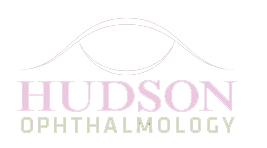Glaucoma is a serious eye condition that affects millions of people worldwide. It is characterized by increased intraocular pressure (IOP) within the eye, which can lead to optic nerve damage and vision loss if left untreated. Fortunately, advancements in medical technology have led to the development of effective treatments for glaucoma, including laser therapy. In this article, we will delve into the details of laser treatment for glaucoma, its benefits, and its role in preserving vision and enhancing the quality of life for patients.
Understanding Glaucoma:
Before delving into laser treatment, it is essential to grasp the basics of glaucoma. The primary cause of glaucoma is the inadequate drainage of aqueous humor, the fluid that nourishes the eye. As the fluid accumulates, it increases the IOP, which in turn damages the optic nerve, responsible for transmitting visual signals to the brain. The most common types of glaucoma are open-angle glaucoma and angle-closure glaucoma, with the former being more prevalent.
Traditional Treatments for Glaucoma:
In the past, glaucoma management relied primarily on eye drops and oral medications to lower IOP. While these treatments can be effective for some patients, they may have side effects and require consistent adherence to a treatment regimen. Moreover, some individuals may not respond well to medication, leading to a demand for alternative therapies like laser treatment.
Laser Treatment for Glaucoma:
Laser therapy has revolutionized glaucoma management and become a standard part of the treatment process. The primary goal of laser treatment is to facilitate better drainage of aqueous humor, thereby reducing IOP and preventing further optic nerve damage. There are different types of laser procedures for glaucoma, including:
Selective Laser Trabeculoplasty (SLT):
SLT is one of the most common laser treatments for glaucoma. It targets specific cells in the trabecular meshwork, which is responsible for draining aqueous humor from the eye. By applying low-energy laser pulses, SLT stimulates the cells, improving their function and promoting better fluid drainage. The procedure is minimally invasive, relatively painless, and can be performed in an outpatient setting.
Argon Laser Trabeculoplasty (ALT):
Similar to SLT, ALT is another laser treatment that aims to enhance fluid drainage from the eye. However, unlike SLT, ALT uses thermal energy to open up the drainage channels in the trabecular meshwork. While effective, ALT can have more discomfort during and after the procedure compared to SLT.
Laser Iridotomy:
Laser iridotomy is primarily used for treating angle-closure glaucoma. In this procedure, a small hole is created in the iris using a laser, allowing fluid to flow more freely between the anterior and posterior chambers of the eye. By doing so, it relieves the pressure build-up and prevents further damage to the optic nerve.
Benefits of Laser Treatment for Glaucoma:
Laser treatment offers several advantages over traditional glaucoma management methods:
Minimally Invasive:
Laser procedures are less invasive than surgical interventions, reducing the risk of complications and promoting quicker recovery times.
Outpatient Procedure:
Most laser treatments can be performed in an outpatient setting, eliminating the need for hospitalization.
Reduced Medication Dependency:
Laser therapy can often reduce the need for glaucoma medications or make them more effective when used in conjunction, minimizing potential side effects.
Ongoing Management:
In some cases, laser treatment can be repeated if necessary, providing an ongoing option for managing glaucoma effectively.
For More Info:-
eye care center in yorktown area
hudson eye care center in yorktown
laser treatment for glaucoma in yorktown






Comments